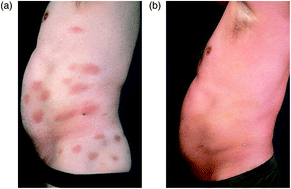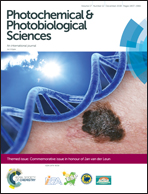Phototherapy of cutaneous T-cell lymphomas
Abstract
Cutaneous T-cell lymphomas (CTCL) are a heterogenous group of non-Hodgkin lymphomas arising in the skin. Mycosis fungoides (MF), the most common variant, is characterised by clonal proliferation of skin residing malignant T-cells. Initially appearing with erythematous patches and plaques it follows a chronic course with progression to cutaneous tumours and extracutaneous involvement in some patients. Phototherapy with ultraviolet A radiation combined with 8-methoxypsoralen (PUVA) and with narrow-band ultraviolet B radiation (NB-UVB) are among the first line options for the treatment of MF and can induce remission in most patients. Sézary syndrome (SS) is a rare and more aggressive CTCL variant with generalized skin involvement. Patients with SS and with erythroderma from MF can benefit from treatment with extracorporeal photochemotherapy (ECP) where peripheral blood is exposed to PUVA. Phototherapy can be safely combined with systemic agents, most notably interferon-alpha and retinoids. Another photoresponsive CTCL variant is lymphomatoid papulosis (LP), a CD30+ lymphoproliferative disease characterised by chronically recurring papules. The disease responds favourably to PUVA but low dose methotrexate might be preferred for long term disease control. Recently updated treatment guidelines have been published to provide evidence-based algorithms for the stage-oriented treatment of MF, SS and LP. Areas of uncertainty are treatment schedules that are currently not optimised for CTCL, the use of phototherapy for maintenance, and the value of ultraviolet A1 radiation, excimer lasers, and photodynamic therapy.

- This article is part of the themed collections: Commemorative issue in honour of Jan van der Leun and 2018 Perspective article collection


 Please wait while we load your content...
Please wait while we load your content...